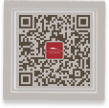- 中文
- EN
- Français
- 日本語
- 한국어
- 繁體中文
Figure paintings and culture integration in the Ming and Qing Dynasties launched in the Hunan Museum
The original exhibition Figure paintings and Culture Integration in the Ming and Qing Dynasties jointly held by Hunan Museum and Changsha Daguancang Art Museum was solemnly opened in the Art Hall of Hunan Museum on March 18th. Representatives of Hunan Provincial Department of Culture and Tourism, the Hunan Provincial Bureau of Cultural Heritage, Hunan Provincial Federation of Literary and Art Circles, Hunan Fine Arts Publishing House, relevant cultural and heritage units in Changsha and friends from the media, as well as directors and senior members of Hunan Museum were invited to attend the opening ceremony. Opening speeches were delivered by Wang Zhijie, deputy director of the Cultural Heritage of Hunan, Chen Xuliang, deputy secretary of the Party Committee of and deputy director of Hunan Museum, and Guo Jiayu, director of Changsha Daguancang Art Museum. The exhibition will be held in No.2 Special Exhibition Hall on the first floor of Hunan Museum until June 18th, 2021.




Themed at strengthening confidence in Chinese culture and promoting excellent traditional Chinese culture, the exhibition highlights the wide-ranging collection of more than 110 pieces (sets) of paintings, statues, sculptures, and literary images. It is divided into four units: “Human Relations and Ethics”, “Follow Nature’s Course”, “Spiritual Enlightenment” and “Harmony of the Three Teachings”, presenting a visual feast for the viewers while upholding the Chinese national spirit and inheriting cultural essence.
The first unit: Human Relations and Ethics—the image building of Confucianism
Representative images of Confucius, Confucius’ students, as well as officials and officers are carefully selected in the first unit to both underscore their significant role in educating scholars and explore the human relations of traditional Chinese society by displaying how did they make farming-reading, cultivate moral character, worship the ancestors and care for parents. Confucianism, which advocates sincerity in human relations, is finely manifested in these lifelike figure paintings. The painting of Fishing besides Maple Trees unfolds before us such a poetic scene: in autumn, being indifferent to fame, a literate person, open-minded and detached, is fishing leisurely in a river surrounded by splendid mountains and maple trees.

Fishing besides Maple Trees
Period: the Ming Dynasty (1368-1644)
Medium: Ink and color on paper
Artist: Qiu Ying (ca. 1498-1552AD)
Dimensions: Height: 127cm; Width: 28.5cm
collected by Hunan Museum
The second unit: Follow Nature’s Course: the pursuit of Taoism
In this unit, images of Taoists were classified and arranged in an orderly way according to their identity, thus outlining their pursuit of harmony of the universe, peace of the country as well as sincerity and kindness of people systematically. For example, Magu Presenting Birthday Gift to the Queen Mother of the West is a masterpiece of Huang Shen and a fine combination of meticulous painting, freehand brush work and graphological brushwork style, depicting the story of Ma Gu in Taoist fairy tales vividly.

Magu Presenting Birthday Gift to the Queen Mother of the West
Date: 1766, Qianlong reign (1735-1796), the Qing Dynasty (1636-1912)
Medium: Ink and color on paper
Artist: Huang Shen (1687-1772)
Dimensions: Height: 181cm; Width: 101cm
collected by Hunan Museum
The third unit: Spiritual Enlightenment: the ultimate concern of Buddhism
Impressive Buddhist artworks of Buddhas, Bodhisattvas, Heavenly Kings, and arhats were displayed in this unit. Following mature ritual procedures and measurements, they were produced on a large scale and gained popularity in civil society, revealing the beauty of clarity and wisdom of nature and human being. In Album of Arhats on the Patta-leaf (2), arhats were delicately painted on the pattra-leaf, blending perfectly with the saying “to see a bodhi in a leaf”.

Album of Arhats on the Patta-leaf (2)
Period: the Ming Dynasty (1368-1644)
Medium: Ink and color on pattra-leaf
Dimensions: Length:16cm; Width: 28.5cm; Thickness: 2cm
collected by Hunan Museum
The fourth unit: Harmony of the Three Teachings—the cultural images in the Ming and Qing Dynasties
The fourth unit mainly shows the characteristic images of the confluence of Confucianism, Taoism and Buddhism, which contains the inclusive spirit of Chinese culture, namely “The sea receives all rivers; Utmost wit listens to all sides”. From the image of Guan Gong, who was worshipped by the Three Teachings, to the painting that promoting virtues and praying for happiness, or even in literary works and legends, we can sense the collision and blending of multi-cultures. For instance, the universe is divided into three realms of Heaven, Earth, and Water in the painting of The Sages, which depicts variegated and well-proportioned figures of Confucianism, Taoism and Buddhism with exquisite touches and bright colors.

The Sages
Period: the Qing Dynasty (1636-1912)
Medium: Ink and color on paper
Dimensions: Height: 163cm; Width: 94cm
collected by Changsha Daguancang Art Museum
In addition to presenting traditional Chinese culture, the exhibition also applies two new media imaging devices that employ dynamic and multimedia interactive technology. With the combination of technology and arts, this very exhibition is both endowed with connotations of the new era and displayed in modern forms. By injecting new life into the exhibits and bringing the viewers closer to immersive experience in the museum, the exhibition offers a platform for them to discover and grasp the profound connotation of it quietly and naturally.
Chinese people believe that “The sea receives all rivers; Utmost wit listens to all sides”. As we can see, in the Ming and Qing Dynasties, Confucianism, Taoism and Buddhism’s maintenance of relative independence and the state of confluence is also made possible by their pursuit of openness, inclusiveness, and harmonious coexistence. Meanwhile, the internal transcendence embodied in the integration and development of the Three Teachings endows Chinese culture with a character of seeking self-innovation and being in tune with the times, which has become the cultural code for it to grow and prosper for thousands of years. It is hoped that this exhibition can provide people with an opportunity to look back on the cultural origin of the Chinese nation and explore the contemporary value of outstanding traditional culture, thus separating the wheat from the chaff and making the past serve the present. With this in mind, we can build a social consensus on and inject spiritual momentum for developing Chinese culture and practicing socialist core values.



